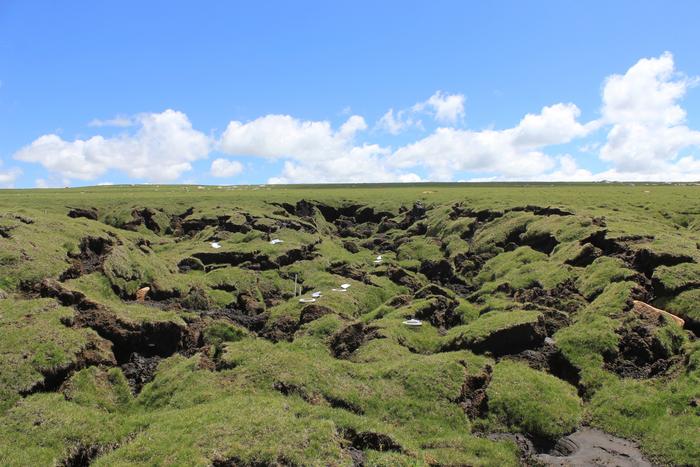Scientists Discover Heightened Sensitivity to Warming in Thermokarst Areas
A new study published in Nature Geoscience has revealed that soil carbon dioxide (CO2) emissions are more sensitive to climate warming in permafrost-collapsed areas, known as thermokarst, compared to non-collapsed regions. The findings provide crucial insights into the permafrost carbon–climate feedback loop and its potential impact on future climate change.
Led by Prof. YANG Yuanhe from the Institute of Botany of the Chinese Academy of Sciences, the collaborative research group conducted field warming experiments and laboratory incubation of soils from a large-scale sampling to investigate the influence of thermokarst formation on soil CO2 flux responses to climate warming.
The study found that warming-induced increases in soil CO2 release were approximately 5.5 times higher in thermokarst features than in adjacent non-thermokarst landforms. This heightened sensitivity to warming in thermokarst-affected soils was attributed to lower soil substrate quality and a higher abundance of microbial functional genes related to organic carbon decomposition.
Extrapolating Results Could Reveal Significant Global Impact
To further explore the global importance of their findings, the researchers extrapolated the warming response of soil CO2 flux to all upland thermokarst regions in the Northern Hemisphere. “As a preliminary exploration of its global importance, extrapolating the warming response of soil CO2 flux to all upland thermokarst regions in the Northern Hemisphere, there could be an additional 0.4 Pg C year-1 of soil carbon release, which is about a quarter of the projected permafrost soil carbon losses by the end of the 21st century,” said Prof. YANG, corresponding author of the study.
The study’s findings underscore the importance of considering thermokarst formation when assessing the impact of climate change on permafrost regions. Thermokarst areas, which occur in approximately 20% of the northern permafrost region, store about half of all below-ground organic carbon. As warmer temperatures continue to cause rapid permafrost thawing, the heightened sensitivity of these areas to warming could lead to significant increases in soil CO2 emissions, further exacerbating the effects of climate change.
The research group’s multi-faceted approach, which included soil physicochemical analyses, solid-state 13C nuclear magnetic resonance, and metagenomic sequencing, allowed them to identify over 30 potential drivers of the warming effects on CO2 release. By incubating soils from six additional thermokarst-affected sites along a 550-km permafrost transect, they found that thermokarst formation significantly increased the temperature sensitivity of CO2 release, providing additional evidence for the stronger soil CO2 response to warming in thermokarst landscapes.
The study’s findings provide valuable insights that can help improve the accuracy of projections regarding the future trajectory of the permafrost carbon–climate feedback. As the scientific community continues to investigate the complex interactions between climate change and permafrost regions, this research underscores the need to consider the unique characteristics and heightened sensitivity of thermokarst areas in climate models and mitigation strategies.
Keyword/Phrase: Permafrost Collapse and Carbon Emissions


